Review round-up: desktop guitar amps
Practice combos from Fender, Blackstar, Yamaha and Vox put to the test
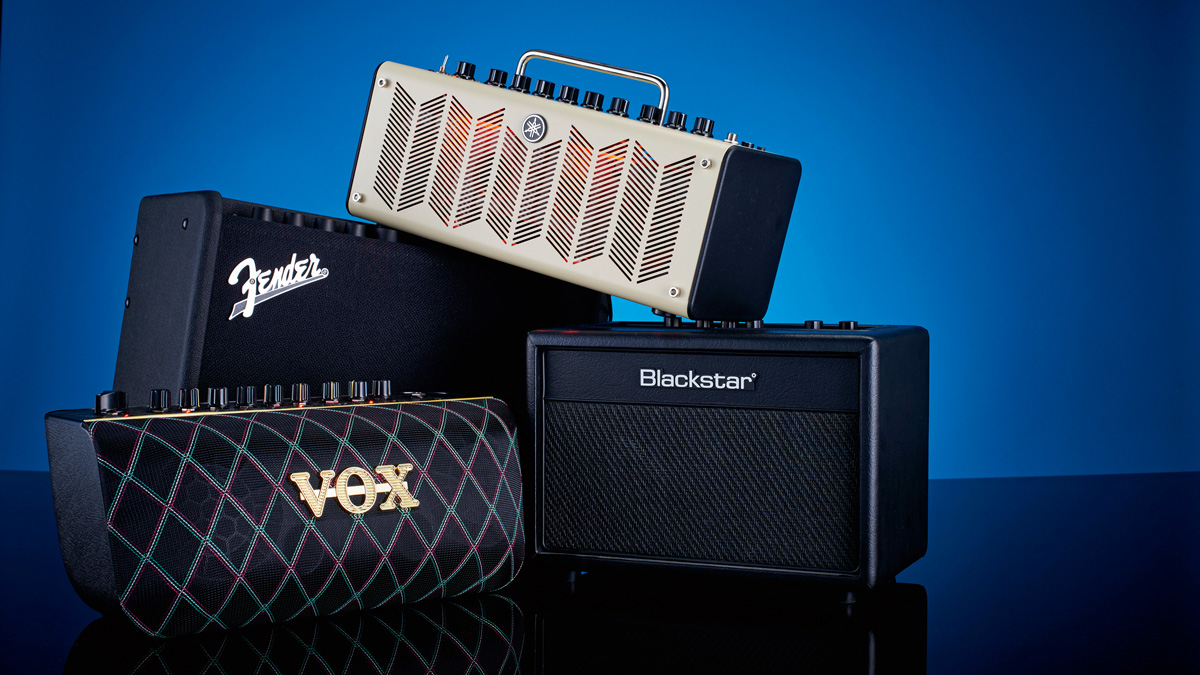
Technology has made profound changes to the way we play and record the electric guitar.
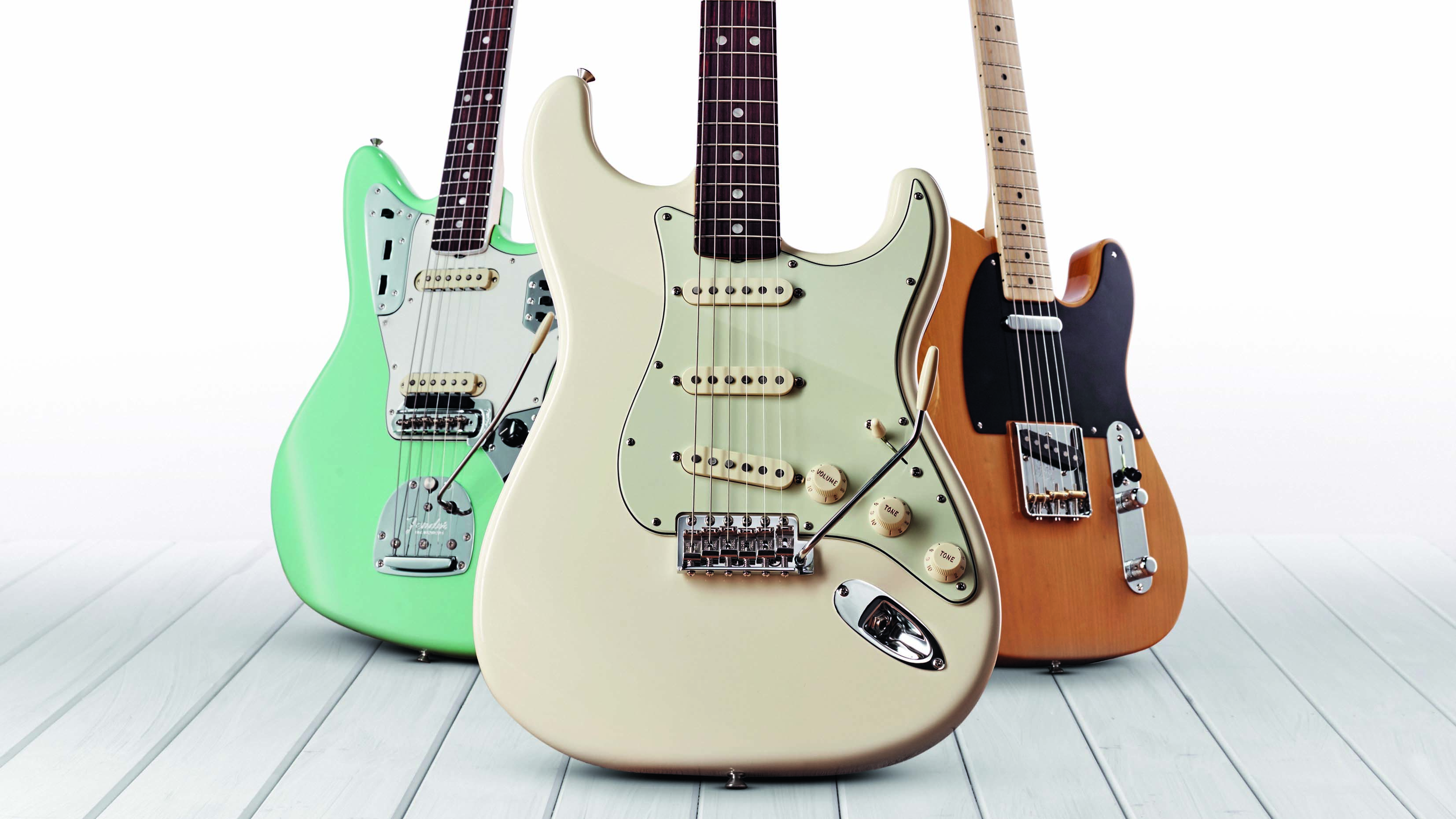
• The 10 best guitar amps under $/£1,000
• The best guitar amps under $500/£500
• The best high-end guitar amps
• The 15 best guitar amps
In the good old pre-digital days, we’d slow down vinyl records from 33rpm to 16rpm, or scrub away the magnetic oxide on a cassette tape with repeated pause/rewinds to work out solos.
Today, thanks to the internet and digital recording there’s an infinite range of products to help any player who wants to learn and get better at what they do. So where does the other half of the instrument - the good old guitar amplifier - fit into all of this?
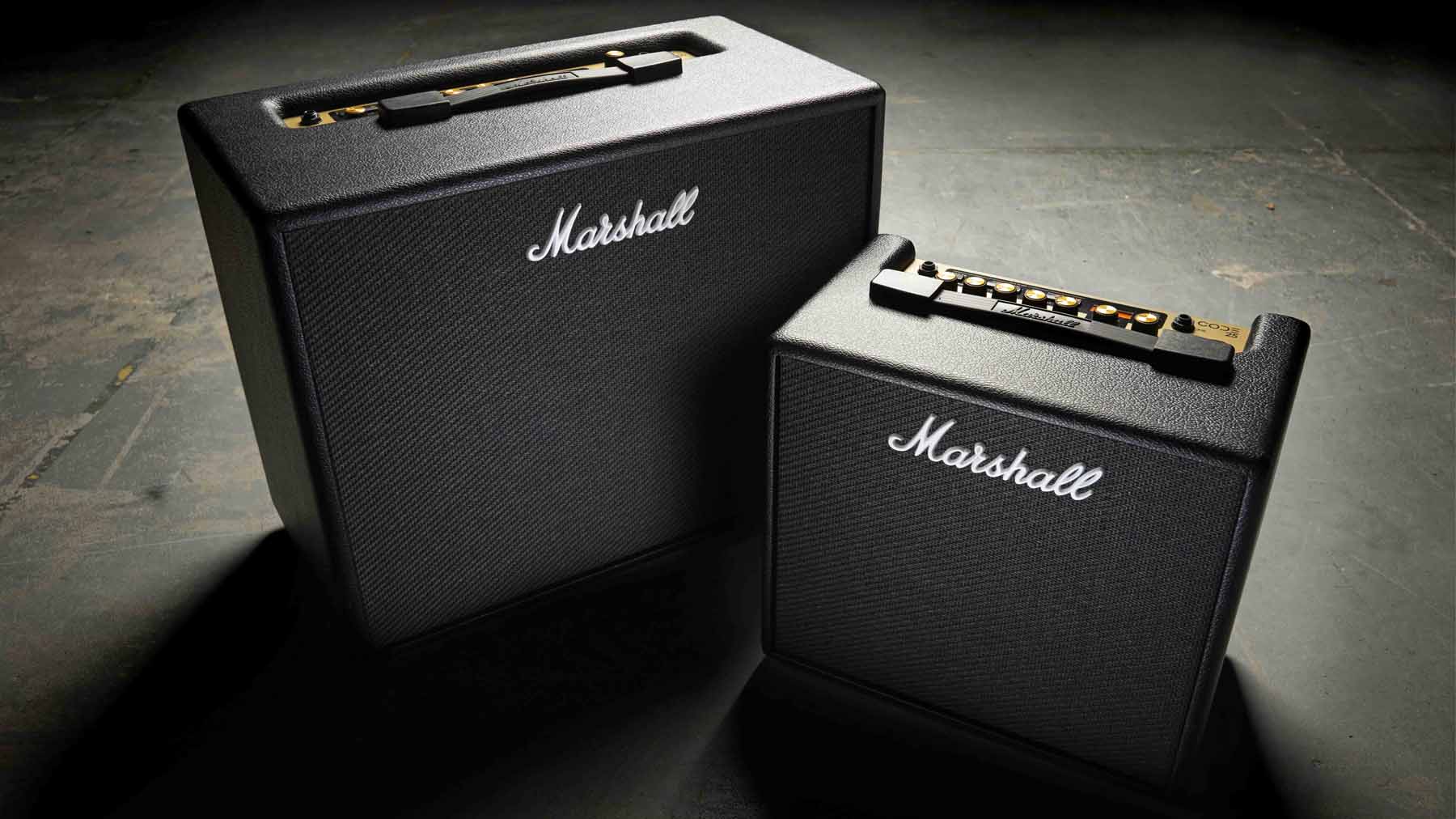
While you can choose from hundreds of software plug-ins that work inside your digital recording package, there’s no substitute for a box with speakers that can simply be plugged into when the mood takes you.
Times change and many modern practice amplifiers have redefined themselves with digital modelling, stereo speakers, USB and Bluetooth connectivity, and software partner apps that extend their life and flexibility.
They’ve become indispensable tools for anyone who wants to record, practise or just play for pleasure at home, taking up very little space and causing minimal upset to neighbours and significant others. Here’s our pick of four of the best...

Yamaha THR10 V2.0
What exactly is a ‘third amp’?
Yamaha gave us the ‘third amp’ concept; a product that could sit happily on a bookshelf at home, ready for action when a stage or studio rig would be too much weight or too much trouble to hook up.
So what’s so different about the V2.0?
The already hyper-realistic sounds have been improved to a new level of authenticity on the V2.0 model, using Yamaha’s Virtual Circuit Modelling technology to create cleaner cleans and bigger distortions, with a very guitar-friendly response that feels like a real valve amp.
On top of its stylish lounge-friendly case you’ll find eight amp models and eight effects, with five user memory slots. There’s also a built-in tuner and tap-tempo button. The THR’s connectivity includes a USB socket to hook up to your computer, along with aux in and headphone sockets, an editor and a mobile practice app.
Any added extras?
The THR also comes with Steinberg’s wonderful Cubase AI recording package, with a special low latency driver that makes recording a doddle. With specially-designed 8cm loudspeakers, the THR can sound impressively big using either a DC adaptor or batteries.
At a glance
Output: 2 x 5 watts rms
Features: Eight amp models, eight effects, USB for audio/data, headphones out, aux in, bundled with Cubase AI recording software
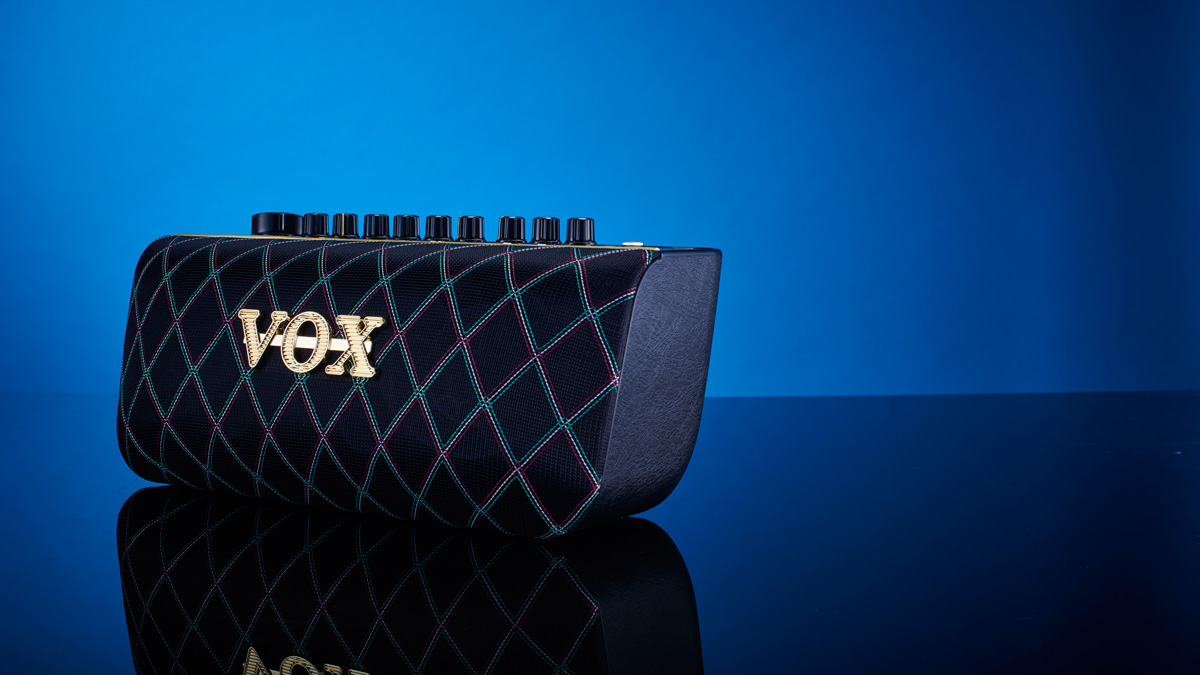
Vox Adio Air GT
We’re liking the look of this...
Vox Adio Air GT is a bold new design that marries cutting-edge technology with traditional Vox style. Behind the slanted speaker grill there’s a specially-designed ported enclosure housing a pair of 3" loudspeakers, driven by a powerful 25 watts per channel output stage that’s designed to respond like a real Vox.
How much has Vox packed in to this little package?
Up front, there’s the latest evolution of Vox’s powerful modelling preamp with 11 onboard amp models and eight effects. This expands to 23 amps and 19 effects when you use the Adio with Vox’s Tone Room editor app. There are eight user program slots too.
Sounds pretty snazzy...
It is. Along with a comprehensive EQ and Acoustage surround- sound stereo imaging, the Adio runs off batteries as well as DC and the Air bit of the name is its secret weapon – wireless connectivity thanks to built-in Bluetooth. The Adio’s Bluetooth supports audio and MIDI, letting you control it from your phone in real time as well as stream audio. The Adio’s software bundle includes the superb and very usable JamVOX III modelling app.
At a glance
Output: 2 x 25 watts rms
Features: Up to 23 amp models and 19 effects (when used with Tone Room app), USB 2-way audio and data, Bluetooth audio and MIDI for wireless control and audio streaming, headphones out, aux in, bundled with JamVox III
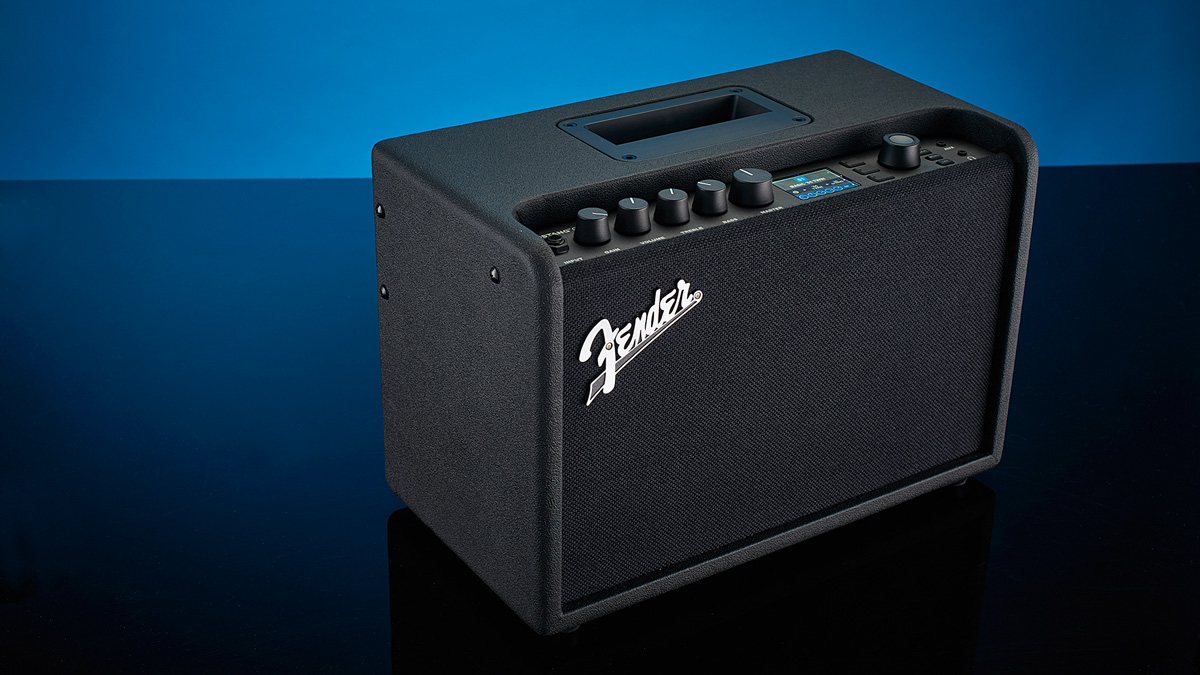
Fender Mustang GT40
Is this a stallion or a pony?
Fender may be traditional but they can do high tech as well as any of the competition and better than most. The awesome new Mustang range includes the compact GT40, which includes Bluetooth for audio streaming and Wi-Fi, letting you connect the amp directly to Fender’s Tone portal without the need for a PC.
Sounds great. What can I do at the Portal?
You can access Fender artist-created presets, download firmware updates and connect with the Mustang community to share presets, playing tips and more. With a powerful 40-watt stereo power stage and relatively big 6.5" speakers, the Mustang 40 is a proper amp, but still small enough for tabletop use.
What other perks are on offer with the Mustang?
No less than 21 improved amp models and 46 effects with spillover ensure you’ll never run out of creative inspiration, plus a small, sharp and bright LCD display lets you know where you are (the mobile version of the Tone app provides perfect control with wireless convenience). With a 60-second looper, headphones and a line out, the Mustang GT40 offers huge bang for your buck.
At a glance
Output: 2 x 20 watts rms
Features: Bluetooth and Wi-Fi, 21 amp models and 46 effects, phones out, line out, comes with Fender’s cross-platform Tone App
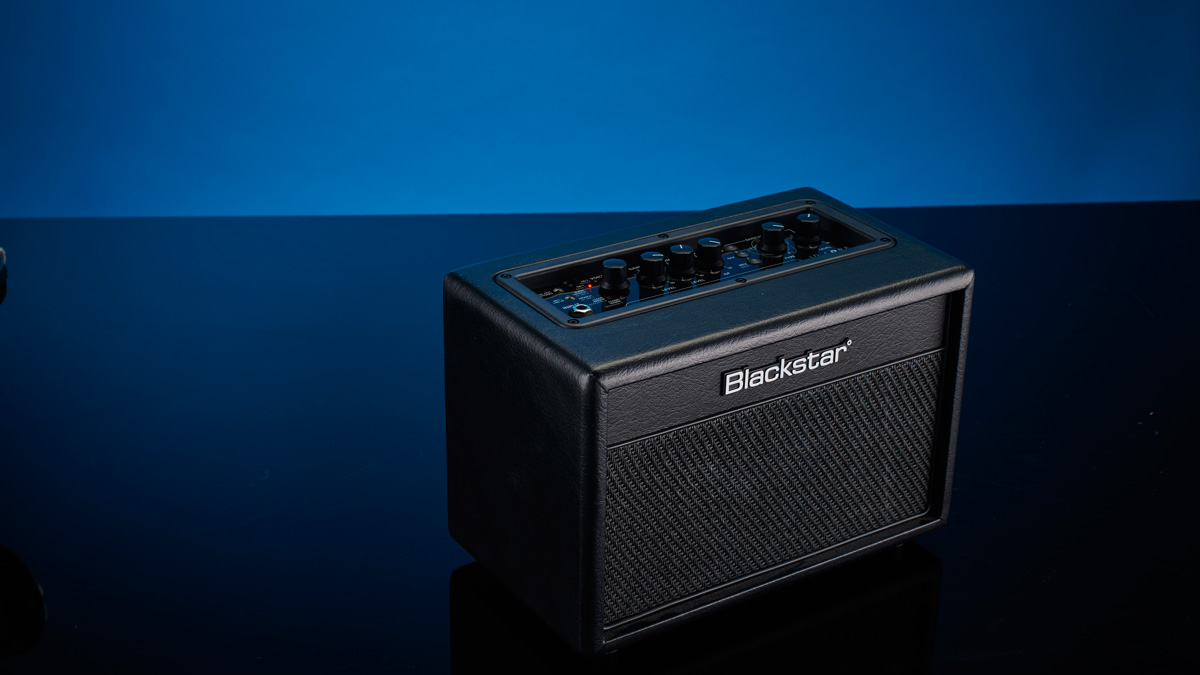
Blackstar ID:Core BEAM
Is this the Blackstar that we know and love?
Blackstar’s ID:Core BEAM is one of the more established desktop rockers and looks the part in black vinyl with a white logo on a black speaker grille. Behind that grille is a pair of speakers powered by a punchy 2 x 10 watt output stage with super-wide stereo imaging and a clever digital preamp with built-in effects.
What does BEAM stand for?
Bass, Electric, Acoustic and Music. The preamp has two bass, six electric, two acoustic and two acoustic simulator voices to cover any guitar need. Bluetooth allows you to stream music to the BEAM for high-quality playback.
The ID:Core BEAM has familiar, amp-like controls for gain, volume and EQ with a voice selector and two knobs to select and vary the onboard effects. There’s a phones output and a line in as well as a USB socket, allowing connection to Blackstar’s excellent Insider software and two-way audio.
What else do I get for my money?
Extra ‘secret’ functions can be accessed through Insider, or by holding down the tap tempo button like a shift key. Despite its plain exterior, the ID:Core BEAM has plenty of features.
At a glance
Output: 2 x 10 watts rms
Features: 12 electric, bass and acoustic voices, 16 effects, 12 memory slots, USB audio, Bluetooth, aux in, headphones out
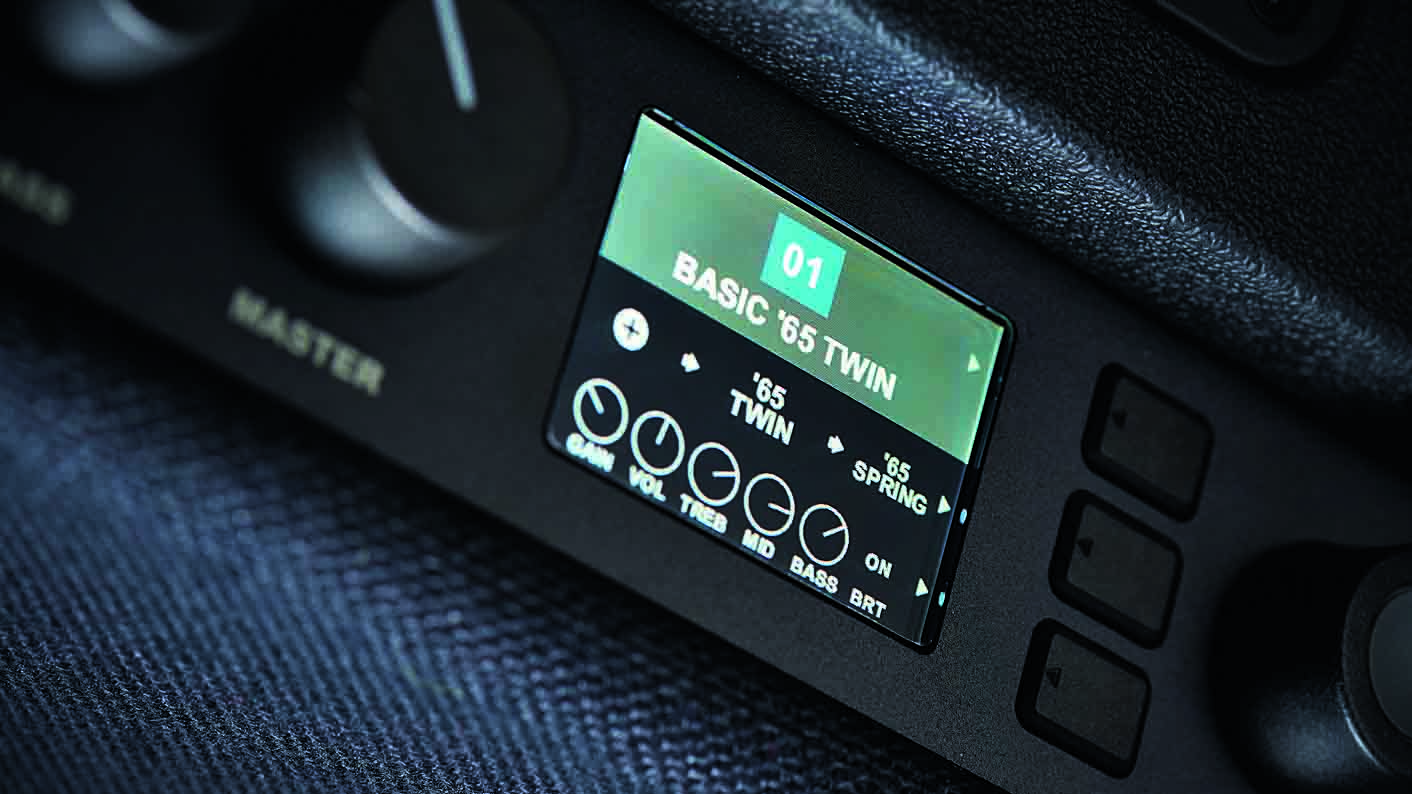
Head to head
This quartet of desktop rockers demonstrates how technology has changed the humble practice amp beyond recognition, with wireless connectivity, digital modelling, external audio and software apps that considerably expand their functionality.
Yamaha’s THR was one of the first in this genre and while its voices have been improved, the THR10 lacks a wireless link. However, the amp voicings are superb and respond with valve-like dynamics, making it great fun to play.
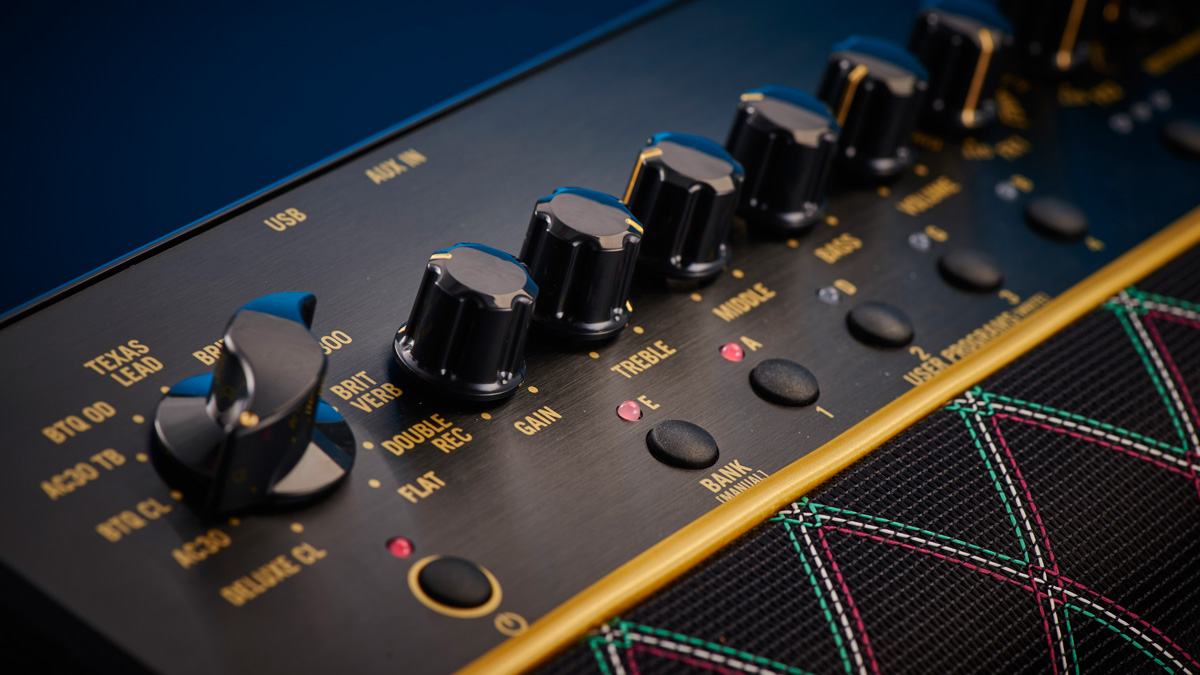
Vox’s Adio Air GT looks striking in a kind of Dali-esque way that may invite some strong opinion, however, there’s no dispute about the quality of its sounds, which borrow from the mighty Valvetronix catalogue and use the latest VET (Virtual Elements Technology), thus digitally recreating classic amp designs right down to component level.
Blackstar’s ID:Core BEAM’s deceptively simple control panel is easy to navigate and puts you in the driving seat with a minimum of fuss. Fender’s Mustang GT40 stretches the desktop classification - it’s the largest of the four, however, it’s more of a proper amp.
The Mustang's 40-watt output and larger speakers give it a lot of authority when turned up. You can use this one for small gigs
The Mustang is the only one not to use an external power supply and its 40-watt output and larger speakers give it a lot of authority when turned up. You can use this one for small gigs or band rehearsals as long as the volume levels are sensible.
The Mustang’s Wi-Fi takes a little while to set up - you have to register and create an account, but it’s worth the wait for what’s in store inside Fender’s Tone portal, with hundreds of artist-approved patches, firmware updates and much more.
Downloads are practically instant and once configured, the connection is reliable and quick to hook up. All four amps provide astounding tone; the Blackstar takes a little more tweaking while the other three are more instantly gratifying, especially the newly-updated THR10, which is hard to beat. However, at the price, the Mustang is unbeatable value.
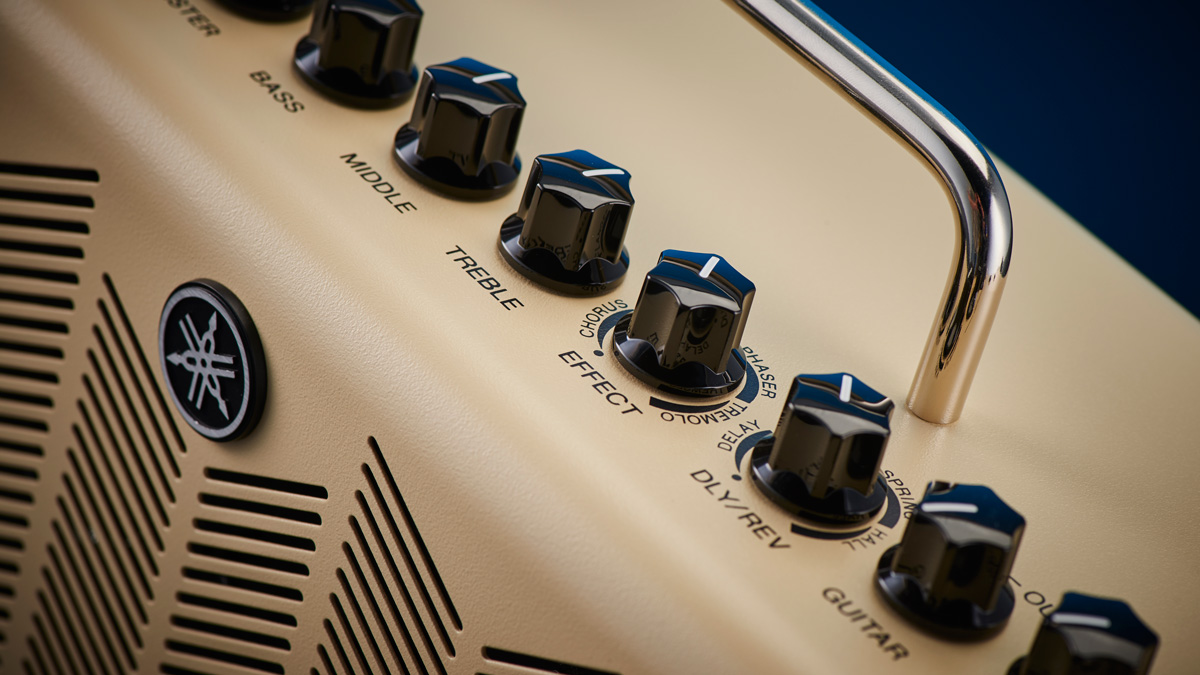
Final verdict
All four of these desktop amps are capable of inspiring players at all levels, from beginner to pro.
For stay-at-home use that takes up the minimum space, the ID:Core BEAM wins, with excellent audio playback quality that can compete with sound-bars costing twice the price.

Yamaha’s THR10 may not have the wireless functionality of the other three, but its sounds are superb and Yamaha’s distinctive styling hasn’t dated at all. Hardly surprising, then, that the THR range continues to be a best seller.
Vox’s Adio Air GT boasts phenomenal sound quality and like the THR10 it can run on batteries, with up to eight hours run-time from eight AA cells. Packing a respectable 50 watts of power, we think the very portable Adio will be massively popular for al fresco performances.
Fender’s Mustang GT40 will provide hours of fun for serious home recording, with a vast library of tone available in a flash from its built-in Wi-Fi, and those bigger speakers give it the punch to work live when needed.
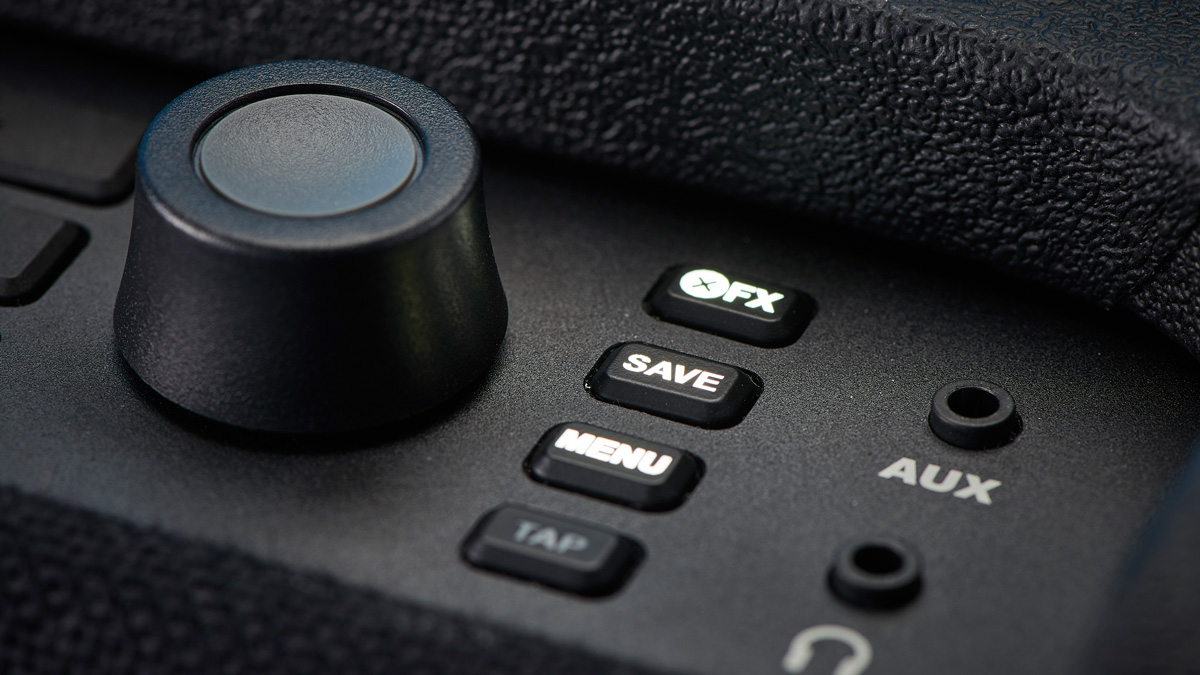
It’s a serious tool but still great fun to use; the built-in 60 second looper inspires spontaneous creativity, while the Mustang’s setlist support and effects spillover (letting delays and reverbs tail off naturally when changing patches) are proper pro features.
While the other three desktop combos are more about being home-friendly, the Mustang is a real player’s amp at a price that’s difficult to ignore. Whichever one you choose, there’s no excuse for not getting down to some seriously fun music-making.
Best for tone: Yamaha THR10 V2.0
4 out of 5
Best for busking: Vox Adio Air GT
5 out of 5
Best value: Fender Mustang GT40
5 out of 5
Best for small desktops: Blackstar ID:Core BEAM
4 out of 5

